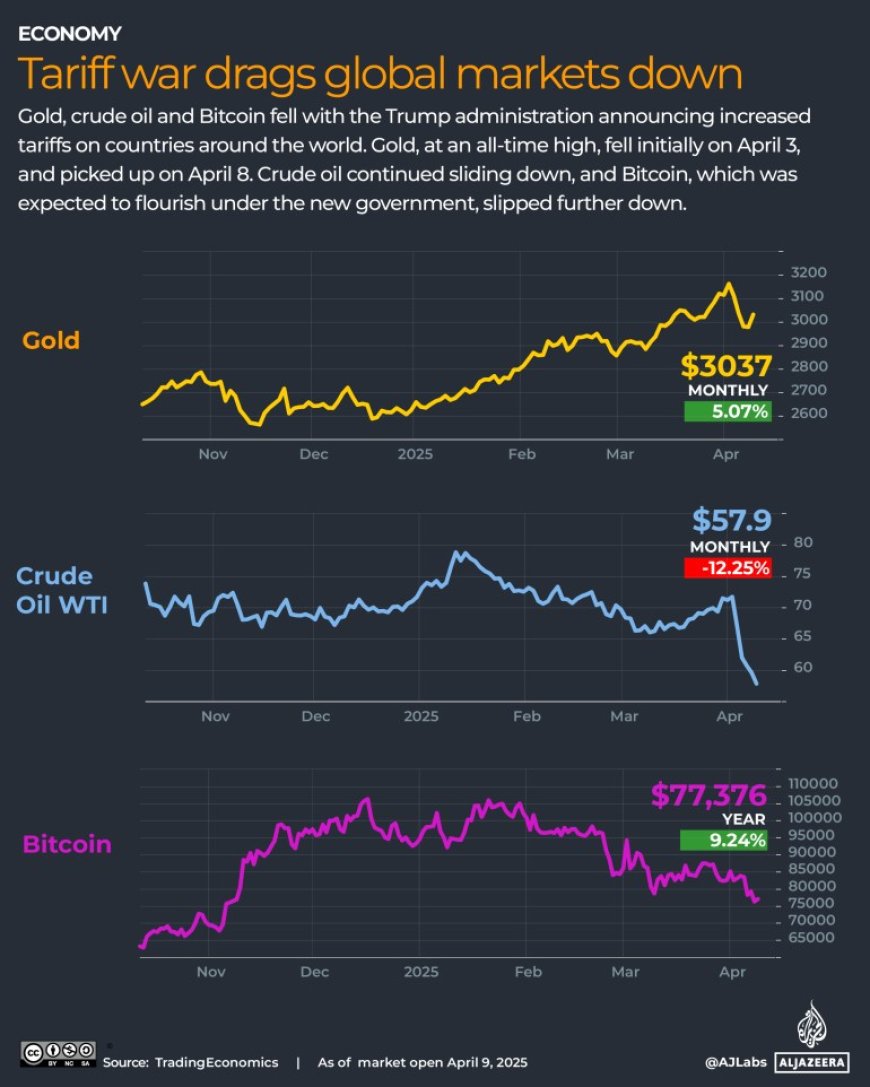Shockwaves Across Markets: Navigating the Global Impact of New U.S. Tariffs
Explore the global impact of the new U.S. tariffs announced in April 2025, including effects on trade partners, small businesses, and global trade forecasts.

Published: August 15, 2025
In early April 2025, President Donald Trump announced sweeping tariffs, including a 10% levy on all imports and steep country-specific duties—such as a 104% tariff on Chinese goods. These measures have sent ripples through global markets, affecting everything from international trade flows to small U.S. businesses.
Global Trade Disruption: WTO’s Revised Forecast
The World Trade Organization (WTO) has adjusted its global trade growth projections in response to the new U.S. tariffs. For 2025, world merchandise trade is now expected to grow by 0.9%, up from a previous forecast of -0.2%, largely due to the frontloading of imports into the U.S. However, the WTO has revised its 2026 forecast downward to 1.8%, down from 2.5%, citing the long-term impact of higher tariffs on trade volumes.
Impact on Trade Partners
Several countries have been directly affected by the new tariffs:
-
China: Facing a 104% tariff on its goods, China has retaliated with its own set of tariffs on U.S. products, escalating tensions between the two nations.
-
Brazil: In response to U.S. tariffs, Brazil announced a $5.5 billion relief package for its exporters. The U.S. quickly countered with additional sanctions, intensifying the trade dispute.
-
Canada: A 25% tariff on Canadian imports led to a significant decline in U.S. liquor and wine exports to Canada, dropping over 60% in the first half of 2025.
Effects on U.S. Small Businesses
Small businesses across the United States are grappling with the consequences of the new tariffs:
-
Restaurant and Grocery Sectors: Indian restaurants and grocery stores in the San Francisco Bay Area are experiencing significant price hikes due to a 25% tariff on Indian imports, with potential increases up to 50%. Key ingredients like basmati rice and spices have become more expensive, forcing businesses to pass on costs to customers.
-
General Small Business Impact: The U.S. Chamber of Commerce reports that broad-based tariffs raise prices for consumers and businesses, harm economic growth, cause uncertainty, and disrupt supply chains. Small businesses, in particular, are struggling to absorb these increased costs.
Market Reactions and Economic Indicators
The financial markets have shown signs of strain:
-
Stock Market Volatility: The announcement of the tariffs led to significant market volatility, with the S&P 500 experiencing sharp declines.
-
Wholesale Prices: In July 2025, U.S. wholesale prices surged by 3.3% year-over-year, marking the largest increase since February. This rise in the Producer Price Index reflects the impact of tariffs on international trading partners, pushing prices up the supply chain.
Looking Ahead: Potential Long-Term Effects
The long-term effects of the new tariffs remain uncertain. While some argue that the tariffs will protect domestic industries, others warn of potential trade wars and a slowdown in global economic growth. The WTO's revised forecasts indicate that the full impact of the tariffs may not be felt until 2026, with a projected growth rate of 1.8% for global trade, down from the previous estimate of 2.5%.








